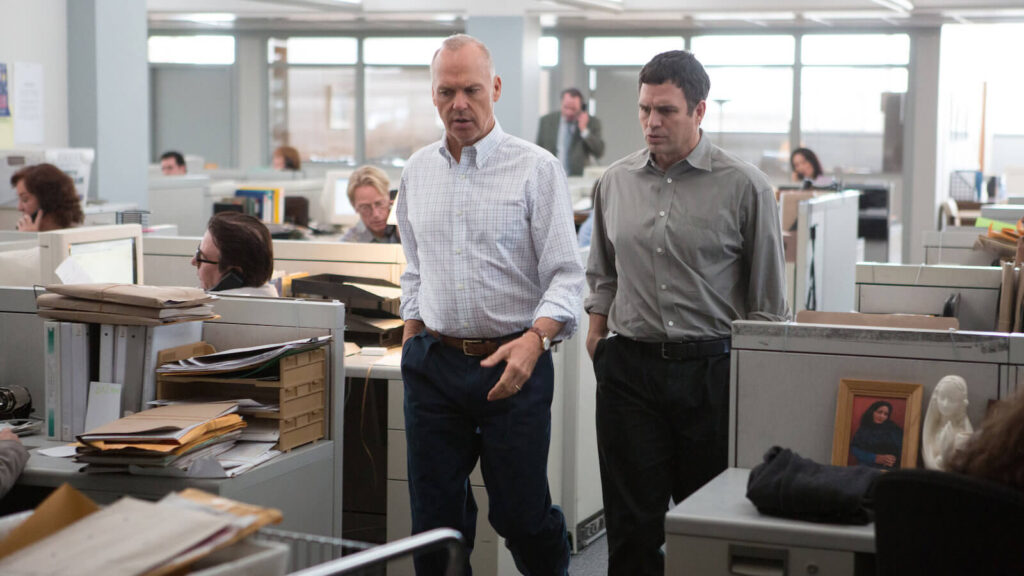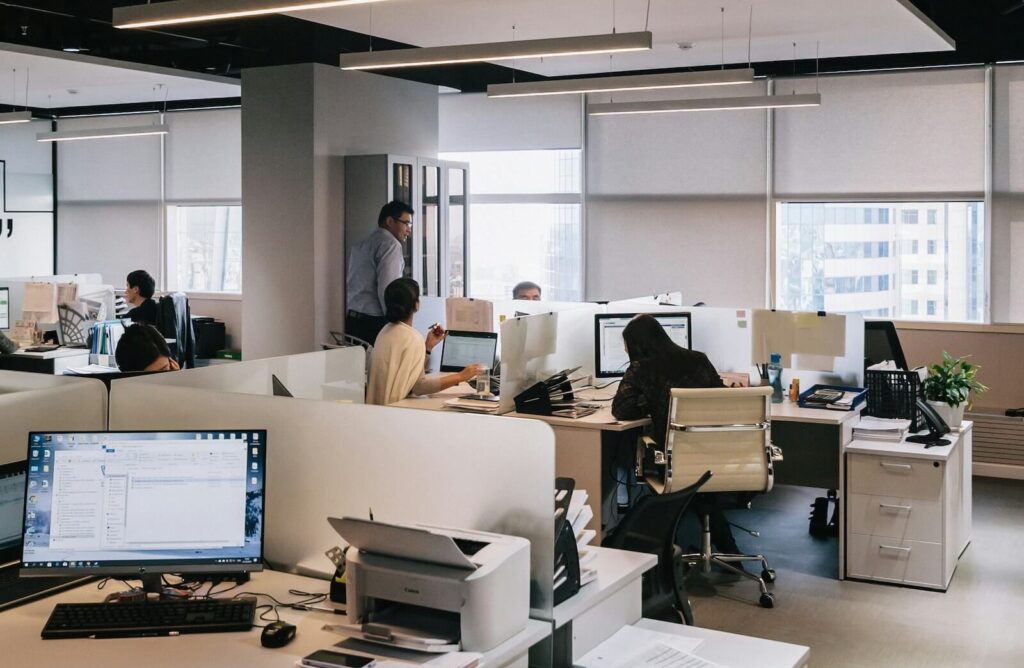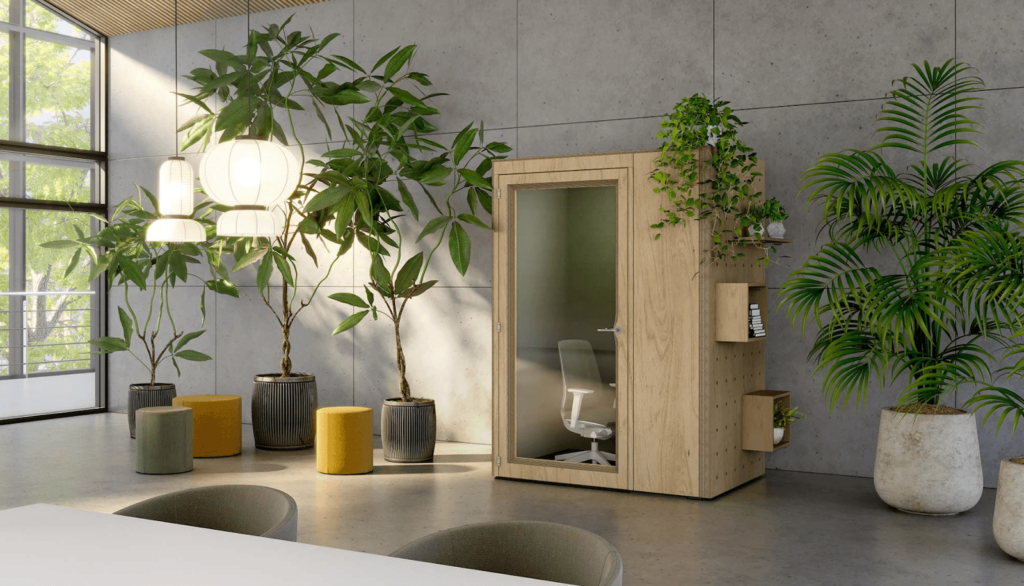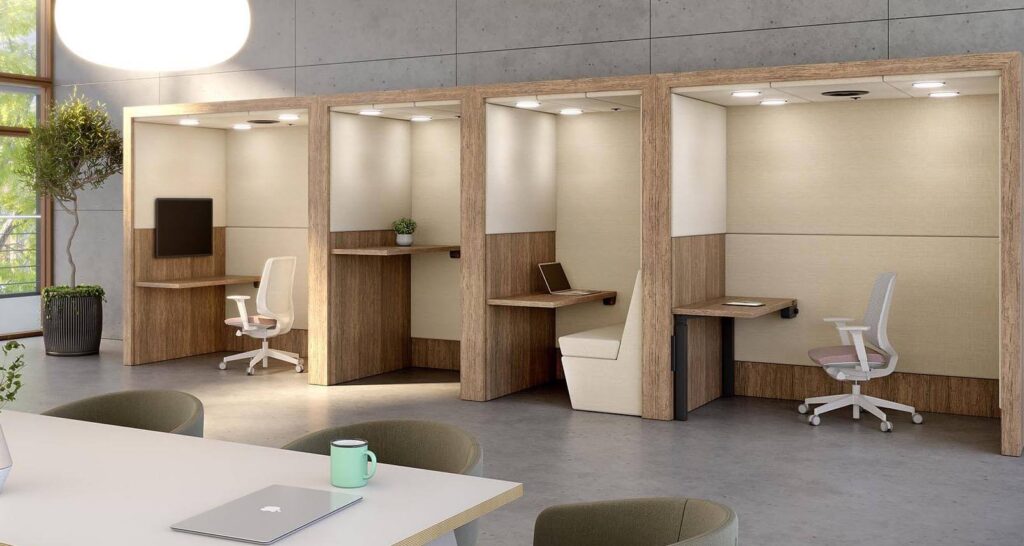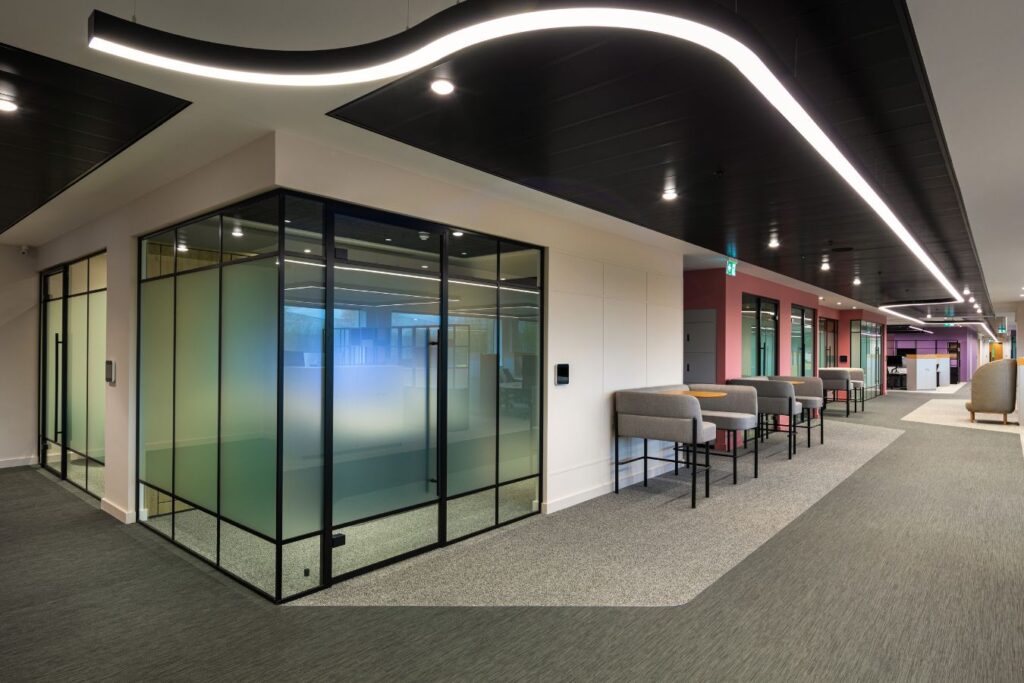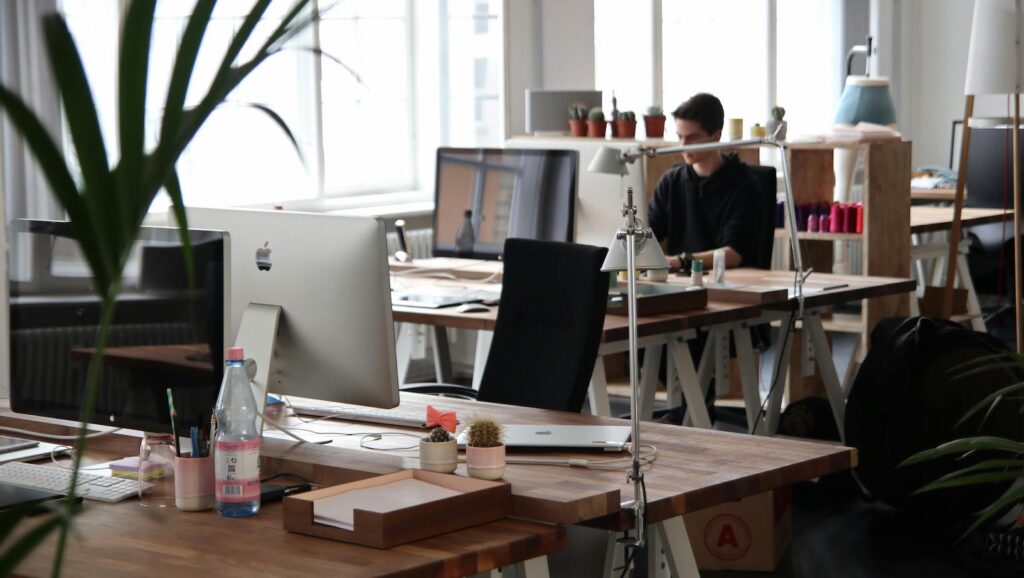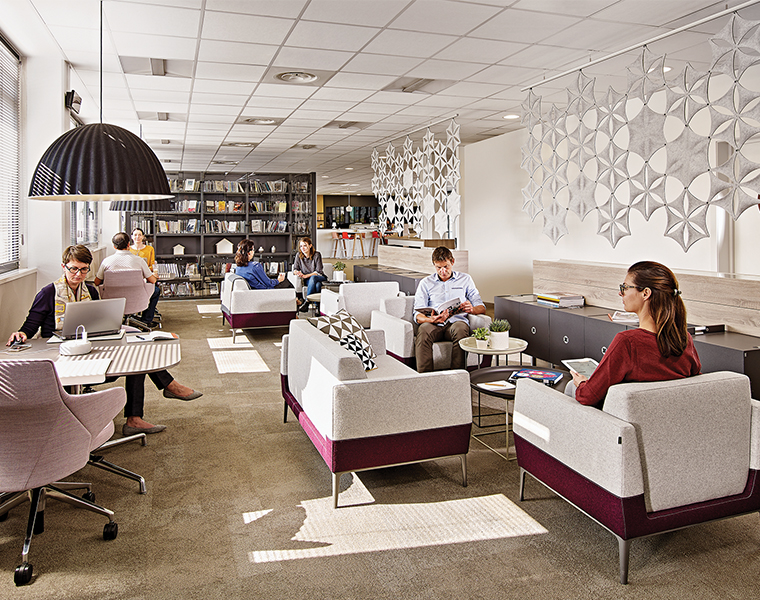The cubicle was—and still is—an iconic motif of traditional office design.
In films, TV shows, artwork, memes and other pop culture media, cubicles are symbolic of a time when commercial interior design was a whole lot less advanced than it is right now.
Although cubicles are such a universal symbol of the office design of bygone eras, they are still a popular fit out choice today, albeit in different forms and often with different names.
In this blog post, we explore the history of the traditional office cubicle, what sparked their modern-day comeback and how you can make them work for your workspace.
History of the traditional office cubicle
Office cubicles were introduced in the 1960s and they remained a popular choice for a number of decades.
More specifically, in 1964, Robert Propst, a Herman Miller furniture company designer, came up with the idea of an ‘Action Office’. This was the idea of an integrated system of individual workspaces that would increase staff productivity—and so, the traditional office cubicle was born.
However, as the decades moved and the open-plan office concept continued to snowball, this type of design became increasingly problematic. Noise levels were a growing issue and people were miserable in their lonely cubicles, with communication and collaboration suffering as a result.
Cubicles became the subject of many satirical comic strips and artworks, as well as academic studies.
In 2019, Harvard Business Review published a study called The Truth About Open Offices, which revealed that while the open plan design typical of the time was a great cost-cutting exercise for employers, it was actually hindering productivity and communication between employees.
So, what catalysed the cubicle comeback?
Over the past few years, we’ve seen cubicles cropping back up in offices but not always in their traditional form—in fact, very rarely in their original form.
Today, you’ll notice cubicle-style working manifesting itself in new and innovative ways such as nooks, pods, clusters, phonebox booths and even ‘Zoom rooms’.
These types of small, shielded or semi-shielded, shared or enclosed work settings have been increasing in popularity for a couple of main reasons. Firstly, as employers and workspace designers do more to address a widespread lack of privacy in office spaces and, secondly, as a legacy of post-Covid precautionary design.
To cubicle or not to cubicle today…
If you’ve read down to this point of the blog post, you’re probably considering the possibility of cubicles in your workspace. One of the best ways to decide if it’s the right move for your space is to better understand the key benefits.
When designed, furnished and configured well, cubicles can bring many benefits to the modern workplace. Provided they’re added into a space based on your employees’ needs and requirements, the humble cubicle can be a great tool to have.
Below, we explore some of the main advantages of incorporating cubicles as part of your next workspace transformation.
All-important privacy
It’s important to provide sufficient opportunities for privacy in the workplace. Some people prefer to do some tasks without an audience and sometimes, people need privacy to work on sensitive tasks that require a level of confidentiality.
Multi-purpose cubicles are the next best thing to a private office if you have a small office or limited space for a wide variety of work settings.
Cubicles are also a great alternative to a full private office because they provide a semi-shielded workspace, rather than a fully enclosed one, which some people prefer.
Supporting focus and concentration
Although collaboration is a critical part of successful teamwork, it’s not the only mode of work. Sometimes, people need to work by themselves so that they can focus or concentrate better.
In our recent blog post about the six types of modern office workers, we explored the ‘Lone Ranger’. This type of employee embraces opportunities to work alone and enjoys working remotely—cubicles are a great way to encourage them into the office while still providing what they need.
Particularly in a predominantly open-plan workspace, cubicles are an effective way to provide somewhere for people to go when they need this kind of individual work setting.
Fostering a more inclusive work environment
The modern workforce is increasingly diverse. Office design can no longer prioritise or solely cater to neurotypical and physically-able people. This means workspace design and fit out must consider all kinds of different needs and cubicles are one type of inclusive solution.
Cubicles allow people the choice and control over when and how they can work in a more personal space. Within this space, they can more easily customise multi-sensory like noise level, textures, light and even smell.
Making cubicles work for modern office design
If you do decide that you’d like to incorporate cubicles into your office design scheme, the next thing you need to consider is how to make cubicles work for you.
They may be rooted in traditional commercial interior design but the modern working world has evolved, which means cubicles need to adapt to new requirements and modes of work.
Below are some key things to consider when it comes to making sure cubicles support your employees and their particular needs.
Make them part of a diverse ecosystem of work settings
Cubicles offer their own benefits and cater well to certain working styles and workplace personalities. However, they don’t facilitate every kind of working style or preference, which is why it’s so important to create a versatile working environment that has a diverse choice of settings.
Consider which configuration will work best for you
These days, cubicles are just rectangular boxes configured in rows—they come in all shapes, sizes and structures so there’s something to suit every workspace. This means you can reap the benefits of cubicles no matter how your teams like to work or if you’re trying to optimise the use of space in a small office.
Ensure the cubicles are designed inclusively
Make sure that when picking your cubicle types and configuring them within the space, you’re doing so with inclusivity and accessibility in mind. In order to maximize the benefits of cubicles in your office design scheme, they need to work for as many people as possible.
Remember, not every style of work setting works for every single office. Cubicles might not be something that makes sense for your teams or your working environment—and that’s okay. If you’re unsure, we’d recommend working with an office design and fit out partner who can help you figure it all out.
If you’re planning and workspace transformation project and want to support your employees better through more strategic office design, get in touch with our space-planning experts.


